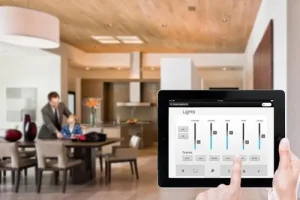
Whether you are just building your first home or have been in your home for a while, there are ways to save energy and money. By making the right choices, you can make your home more energy efficient, saving you money on your utility bills while helping to reduce your carbon footprint.
Reduce heating and cooling costs
Keeping your home warm and cool can be expensive, but there are ways to save on heating and cooling costs. Whether you’re just starting to make the move to homeownership or you’re in the middle of a major remodel, here are some simple steps you can take to save money.
Changing the temperature of your thermostat is an important way to reduce heating and cooling costs. Lowering your thermostat by 10 degrees can save you 10% per year on heating.
Ceiling fans are a great way to cool your home in the summer. Fans can lower your cooling costs by 6 degrees.
Using an awning can reduce the temperature of your room by about 15 degrees. It also prevents the sun from heating your building, which saves 25% on air conditioning.
Turn off lights
Whether you’re trying to reduce your electricity bill or looking to improve the energy efficiency of your home, turning off lights is an important task to consider. Fortunately, there are a variety of ways to do this. Some simple, inexpensive measures you can take include turning off lights when not in use and setting timers.
The most basic step in this process is to make sure you’re using the most efficient lights in your home. Generally, this can be accomplished by replacing inefficient bulbs with energy efficient alternatives. In particular, you should be using LED bulbs, which use less energy to produce light and last much longer than their predecessors.
While you’re at it, you might want to consider installing a smart lighting control system such as a programmable thermostat, or a smart lighting sensor. Smart lighting controls can turn off lights for certain periods of time. These measures can save you money and improve energy efficiency at the same time.
Install a programmable thermostat
Using a programmable thermostat can reduce energy usage and save money. If you install one in your home, you can lower your energy bill by 5 to 20 percent. They can be very convenient and offer a number of extra benefits.
When using a programmable thermostat, you should follow a few basic steps. First, choose a thermostat that is compatible with your heating and cooling system. Then, program the thermostat to match your family’s needs.
For example, if you use your heat pump system, you should consult with a heating and cooling specialist before purchasing a programmable thermostat. These systems may require a special model.
Ideally, the thermostat should be installed in each room or zone of your home. It should also be located in a spot away from open doors, windows, and heating vents.
Get an energy audit
Getting an energy audit is an important step in reducing your energy consumption and improving your home’s energy efficiency. This is because energy costs represent a significant portion of your monthly budget. Taking steps to reduce your energy use can save you money and help the environment.
An energy audit can identify problem areas in your home and recommend ways to improve your energy efficiency. This may include making simple changes or upgrading your home’s insulation. It is also a good idea to check with your utility provider for audit programs. Some local utilities provide rebates for homeowners to help offset the cost of an energy audit.
Professional energy audits are also available. Some companies offer a fixed rate while others charge based on the size of your home. The price of a professional energy audit will vary depending on the size of your home and the company you choose.





